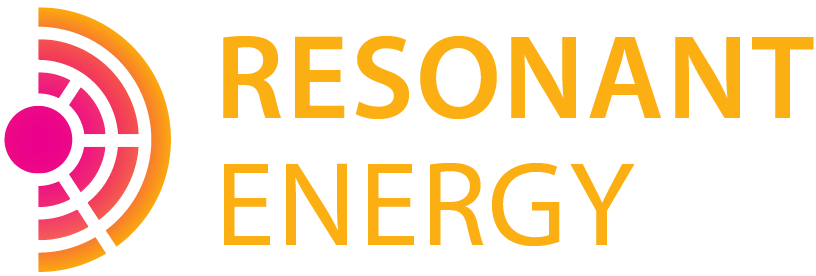Inflation Reduction Act Update: How to Qualify for Bonus Low-Income Solar Tax Credits
In the 10 months since President Biden signed the Inflation Reduction Act (IRA) into law, we’ve received many questions from clients and industry partners about how these new regulations will be implemented. On June 1, the Treasury issued its proposed rules on Low-Income (LI) tax credits, opening a new chapter in equitable solar energy distribution. These changes emphasize the critical intersection of affordable housing and solar power, tying them together with groundbreaking new tax credit incentives.
This post will be focused on the emerging rules for how to qualify for bonus LI tax credits under the IRA. Note that this post details proposed rules, which are open for public comment here until June 30. We expect the Treasury to publish final rules in the months to come. (In case you’d like to learn more about the IRA’s impact on nonprofits, check out our blog post from last fall.)
Environmental Justice Location Adder (10%)
The Treasury is describing projects located in a low-income community as Category 1 and projects located on Indian land as Category 2, both of which will be eligible for a 10% tax credit adder. The Treasury has set a 700 megawatt (MW) capacity limit for Category 1 projects, 560 MW of which will be reserved for single- and multi-family residential behind-the-meter (BTM) facilities under the proposed rules.
Low-income communities are defined as a census tract with a poverty rate of at least 20% or a census tract with an area median income (AMI) that does not exceed 80% of the state’s median income. In metropolitan areas, a census tract can also be considered a low-income community if its AMI does not exceed 80% of that metropolitan area’s AMI. You can check if an area qualifies for this adder using this map.
Financial Benefit to Tenants Adder (20%)
The Treasury has placed emphasis on delivering a "financial benefit" to tenants of affordable housing which will make systems eligible for an incremental 20% tax credit. This lies within the framework of the proposed rules under Category 3, which includes a 200 MW allocation. Broadly, at least 50% of the financial value of net energy savings needs to be equitably passed on to the tenants; the beneficiaries of these savings must be identified as low-income under an existing housing program.
The rules use distinct criteria for calculating the financial value of net energy savings for Direct Purchase (DP) and Third Party Ownership (TPO) projects:
Table 1: Net Energy Savings Calculation
Low-Income Community Solar Adder (20%)
Another exciting provision is the 20% bonus tax credit for "low-income benefit" projects. This falls under Category 4, with a 700 MW allocation and is tailored towards Low Income Community Solar Subscription (LICSS) projects.
To qualify:
At least 50% of the total output must be allocated to qualifying customers, defined as households with income below 200% of the poverty line or below 80% of area gross median income.
Subscriber savings must be equal to or greater than 20% of the value of the underlying Net Energy Metering (NEM) credit (e.g., Net Metering Credit (NMC), Alternative On-Bill Credit (AOBC), etc.)
Application Timing and Selection Process
To be eligible for any of the bonus tax credits, a solar system cannot be operational before the award of the credit. In order to determine which projects win bonus tax credits, the Treasury has proposed new Additional Selection Criteria. Facilities that meet these criteria get priority in the tax credit allocation process.
The Additional Selection Criteria are bifurcated into ownership and geographic categories. Facilities that fulfill at least one requirement in each category will be given the highest priority; facilities that meet a requirement in one category (say, ownership but not geographic) will be prioritized above those that meet none of the requirements.
The ownership category includes structures such as Tribal Enterprises, Alaska Native Corporations, Renewable Energy Cooperatives, Qualified Renewable Energy Companies, and Tax-Exempt Entities. On the geographic front, the facility should be located either in a Persistent Poverty County (PPC) or in a census tract designated as disadvantaged based on specific percentile parameters for energy burden and low income which can be identified using this screening tool.
Documentation for Bonus TC Allocation Application
The rules governing what documentation is needed to apply for the bonus tax credit allocation application are relatively complex (see table here for more details). For BTM facilities with <1 MW AC, here's a brief rundown of what’s needed:
A completed site visit
An executed DP contract or PPA contract
Building and electrical permits
Facility not designed to produce more than 110% of the historical customer load
Closing Thoughts
Equitable solar development is a pivotal part of the transition to renewable energy, and the proposed Treasury rules offer a glimpse into how the solar industry will change in the months and years to come. Understanding these rules helps us realize the immense potential of the IRA to bring about a fair and equitable energy future.
We are still waiting for guidance from the Treasury regarding other policies including the Direct Pay provision for nonprofit organizations. We will continue to work with our partners and policy experts to remain at the forefront of these new regulations and we look forward to updating you as more information becomes available.
For now, put your hand up and make your voice heard during the open comment period for the Environmental Justice provisions which runs through June 30. Together, let's continue to illuminate the path toward a more just and equitable energy system.

